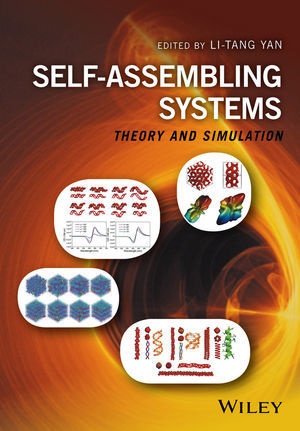Read more
Informationen zum Autor Professor Li-Tang Yan, Tsinghua University, China Professor Yan's research focuses on computational macromolecular science, materials design and self-assembly. He uses multiscale modeling and simulation methods as well as theoretical analysis to explore the basic science and the fundamental principles in studies spanning polymer science, nanoscience, biomacromolecules and biomembranes. Professor Yan has published more than 60 papers in peer reviewed journals such as Nano Letters, ACS Nano, Biomaterials, Scientific Reports, JPC Lett, Nanoscale; these articles cover some important directions in the field of self-assembling systems, e.g., polymer nanocomposites, self-assembly in biomembranes, and self-assembly of nanoparticles to various suprastructures. In 2013 he published an invited review articles in Progress in Polymer Science, entitled "Computational Modeling and Simulation of Nanoparticle Self-Assembly in Polymeric Systems: Structures, Properties and External Field Effects". In 2014 he received an Excellent Young Investigator Award from NSFC (Natural Science Foundation of China). Klappentext Provides comprehensive knowledge on concepts, theoretical methods and state-of-the-art computational techniques for the simulation of self-assembling systems* Looks at the field of self-assembly from a theoretical perspective* Highlights the importance of theoretical studies and tailored computer simulations to support the design of new self-assembling materials with useful properties* Divided into three parts covering the basic principles of self-assembly, methodology, and emerging topics Zusammenfassung Provides comprehensive knowledge on concepts! theoretical methods and state-of-the-art computational techniques for the simulation of self-assembling systems* Looks at the field of self-assembly from a theoretical perspective* Highlights the importance of theoretical studies and tailored computer simulations to support the design of new self-assembling materials with useful properties* Divided into three parts covering the basic principles of self-assembly! methodology! and emerging topics Inhaltsverzeichnis List of Contributors xiii Preface xvii 1 Theoretical Studies and Tailored Computer Simulations in Self-Assembling Systems: A General Aspect 1 Zihan Huang and Li-Tang Yan 1.1 Introduction 1 1.2 Emerging Self-Assembling Principles 3 1.2.1 Predictive Science and Rational Design of Complex Building Blocks 3 1.2.2 Entropy-Driven Ordering and Self-Assembly 5 1.2.3 Programmable Self-Assembly 10 1.2.4 Self-Assembling Kinetics: Supracolloidal Reaction 14 Acknowledgments 16 References 16 2 Developing Hybrid ModelingMethods to Simulate Self-Assembly in Polymer Nanocomposites 20 Xin Yong, Stephen C. Snow, Olga Kuksenok and Anna C. Balazs 2.1 Introduction 20 2.2 Methodology 21 2.2.1 Dissipative Particle Dynamics 21 2.2.2 Polymer Chains, Gels, and Nanoparticles 22 2.2.3 Radical PolymerizationModel 24 2.3 Results and Discussions 27 2.3.1 Modeling Bulk Polymerization Using FRP and ATRP 27 2.3.2 Modeling Regeneration of Severed Polymer Gels with Interfacially Active Nanorods 32 2.3.3 Modeling the Formation of Polymer-Clay Composite Gels 43 2.4 Conclusions 47 Acknowledgments 48 References 49 3 Theory and Simulation Studies of Self-Assembly of Helical Particles 53 Giorgio Cinacchi, Alberta Ferrarini, Elisa Frezza, Achille Giacometti and Hima Bindu Kolli 3.1 Introduction: Why Hard Helices? 53 3.2 Liquid Crystal Phases 55 3.3 Hard Helices: A MinimalModel 56 3.4 Numerical Simulations 57 3.4.1 Monte Carlo in Various Ensembles 57 3.4.1.1 Canonical Monte Carlo simulations (NVT-MC) 59 3.4.1.2...

